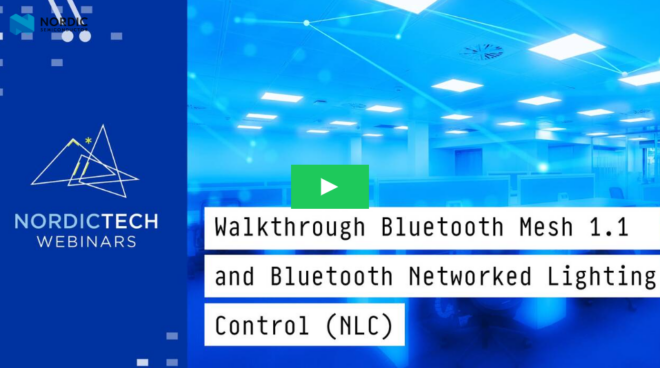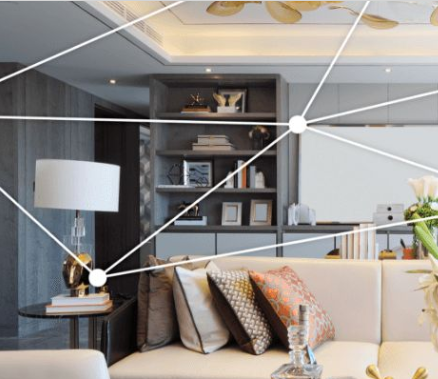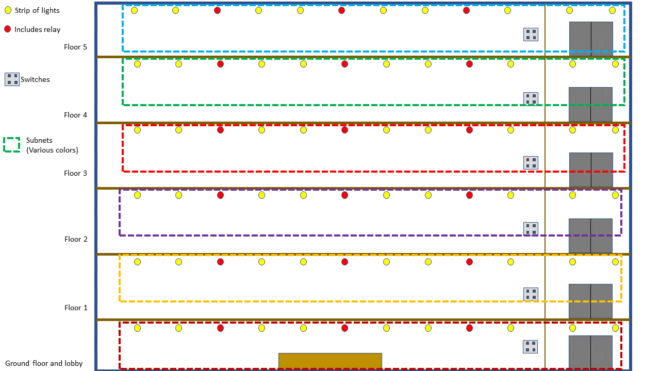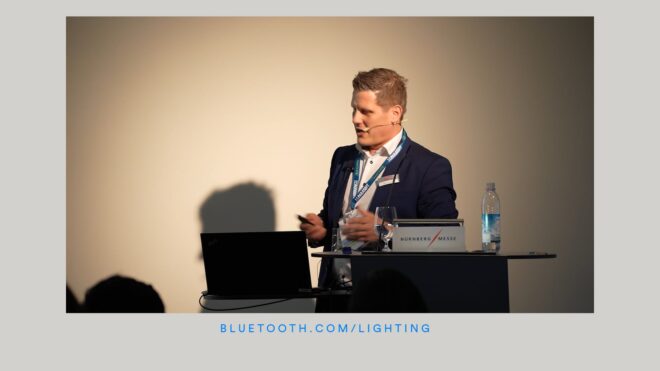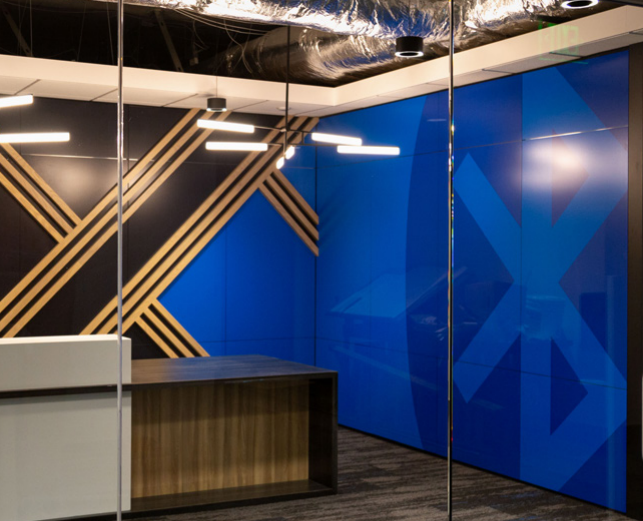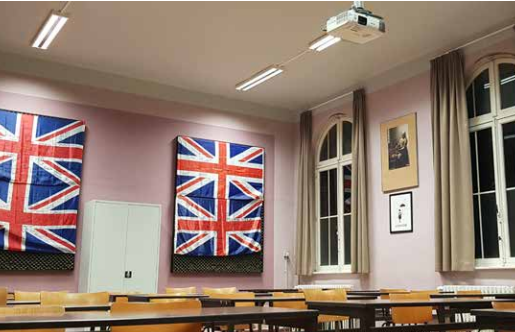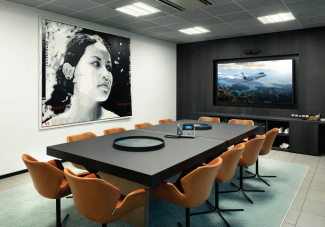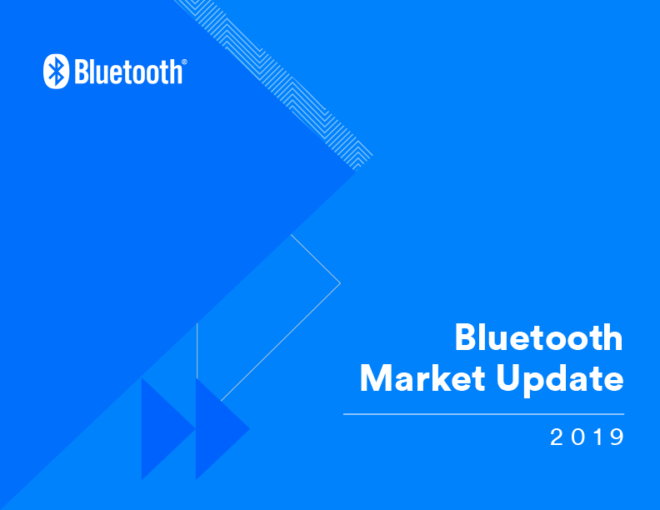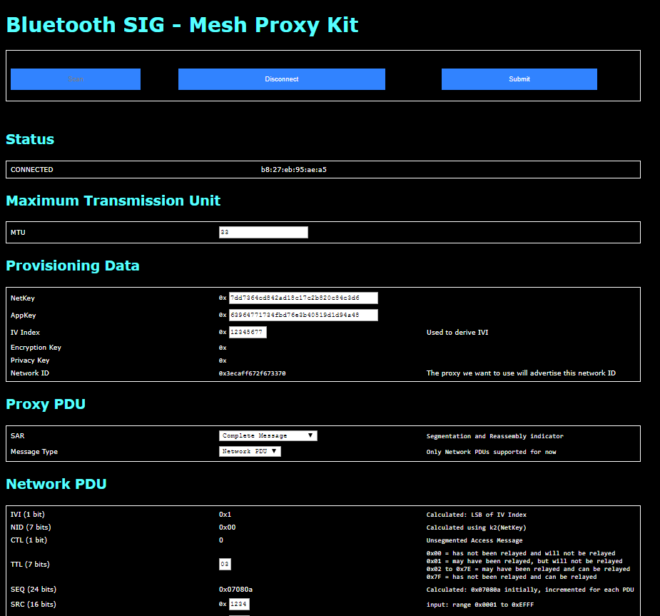Bluetooth® technology and DALI® already have a long history of working together. But as these solutions successfully address a broader market, it may be good to explain the foundations of both standards and how they are designed to complement each other.
Let’s start with a dimmable luminaire. The analog approach is to use a 0-10V dimmable LED driver. The driver is a specialized power supply which provides precisely controlled electrical current to LEDs which emit light. The more current, the brighter the light output. This dimming function is controlled by a 0-10V electrical signal. At 0V the light is off. At 10V the light is at full output power.

One basic function of DALI is the same – to send commands to control gear, such as LED drivers, which in turn provide power to the light source. Except that DALI is digital, which means it uses digital commands to tell the driver the desired output level. So, in the DALI case, we have a device (known as an application controller) which sends the commands to the driver.
The commands tell the driver “go to 0” (which means turn the light off) or “go to full output” (which means provide full power to the LEDs) or anything in between, e.g., “dim down to 30 percent”. The control commands for control gear, such as LED drivers, are specified in the DALI Part 102 specifications (the DALI standard has a rich set of functionalities, organized in parts).
In the DALI world, the application controller and the LED drivers are connected through a DALI bus. This is an electrical bus, which, in the DALI case, is a pair of ordinary wires. They are polarity free, which means it does not matter how they are connected between a controller and a driver.
There may be multiple units connected to the same DALI bus – in the case of drivers, there may be up to 64 drivers on a single bus. DALI also supports wired switches and sensors, which can be added to the same DALI bus. Application controllers receive inputs from switches or sensors, make decisions, and then send appropriate commands to the drivers.
With the rise of wireless network lighting controls (NLCs) it has become more practical, in some cases, to control luminaires without using any wired control bus (such as DALI). Bluetooth® Mesh, in particular, does lighting control very well with native support for switches, sensors, and luminaires in the super-robust, no-point-of-failure, distributed architecture.
Why Use DALI With Bluetooth Mesh?
A recent DALI initiative focuses on the intra-luminaire network. As the name suggests, this is the network inside a luminaire. This network may be as simple as two devices (units) – a driver and a controller, which also could be a Bluetooth Mesh node. In this case, the controller implements the Bluetooth lighting models and presents itself in the network as a dimmable luminaire. It receives Bluetooth messages which control the light level – set lightness to 0 or set lightness to 65535 (full output) or any level in between. Then it sends DALI commands to the driver, which dims the LEDs accordingly.

The DALI Alliance has introduced D4i certification for devices that have a feature set aligned with the requirements of intra-luminaire networks. A clever feature of D4i is it can provide power over the bus. This means the Bluetooth® node does not need a dedicated power source provided that it can draw sufficient power from the available DALI bus current. In this case, the setup becomes super simple – take a D4i driver and connect a Bluetooth node containing a DALI application controller, using two simple wires. That’s it.
The intra-luminaire network may have more than two DALI devices. For example, in larger luminaires there may be multiple drivers. All drivers share the single DALI bus with the Bluetooth node which also acts as a DALI application controller.

Why Use a DALI Bus Instead of a Traditional 0-10V Control Line?
The first benefit was already mentioned – less wires, as the Bluetooth® node is powered straight from the DALI bus.
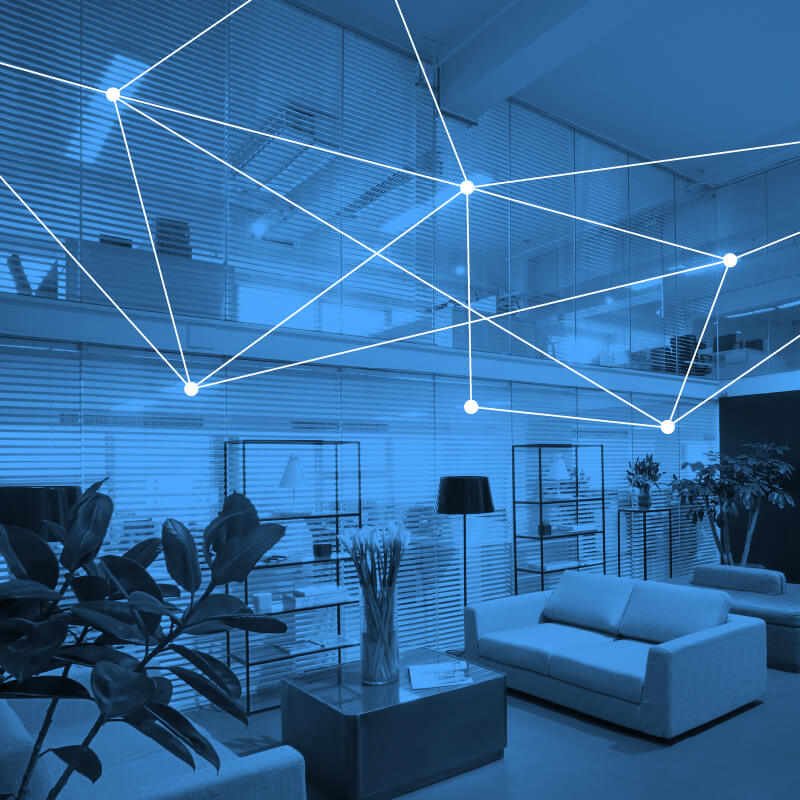
The second benefit comes from the fact that DALI communication is digital. This means the control of the drivers is much more precise. It is like everything digital – a compact disc stores audio much more precisely compared to an analog compact cassette (does anyone remember what that was?). So the Bluetooth Mesh node is able to control the light very precisely when using DALI. This is particularly noticeable at low light levels. DALI drivers are capable of precise deep dimming – they can go to very low levels and gently fade to off.
The third benefit of DALI is it is a bi-directional communications system. The Bluetooth Mesh node can read various data points from the connected DALI drivers. And there is a lot of interesting data to read and report over the Bluetooth Mesh network, in particular for maintenance and energy consumption reporting. DALI drivers report many usage statistics, such as run hours, temperature, and abnormal events (e.g., under and over voltage). They can also report energy consumption, a very important metric these days. So a Bluetooth Mesh node can read real-time power/energy data from the DALI drivers and report it over the wireless network. This in turn can be used to optimise energy usage and also to demonstrate the required performance necessary for code compliance or qualification for energy rebates.
The best news here is that the operation of a Bluetooth Mesh node with an integrated DALI application controller has been standardized. The specification is DALI Part 341 and the Bluetooth Special Interest Group (SIG) is working closely with the DALI Alliance to enable a certification program for devices conforming to the relevant standards.
And this is just the beginning. DALI is a very rich standard, defining many functionalities. One of the most interesting is DALI Part 202, which covers the operation and testing of emergency lighting luminaires. Part 202, in particular, defines how such emergency lighting luminaires are tested periodically in the field. With Bluetooth® Mesh, these tests can be commanded with a phone application and scheduled for periodic automatic execution. Bluetooth Mesh provides time and scheduling models which can orchestrate the testing of emergency luminaires to comply with code regulations. And test results can be collected over the Bluetooth Mesh network, eliminating tedious paperwork.
It is not often that two independently developed technologies are so complementary to each other. Bluetooth Mesh and DALI are a perfect combination. Together they form an end-to-end digital highway for lighting control and data collection.
![]()
FEATURED INNOVATION
Bluetooth Networked Lighting Control
Bluetooth® Networked Lighting Control systems are deployed in offices, retail, healthcare, factories, and other commercial facilities to deliver a combination of energy savings, an enhanced occupant experience, and more efficient building operations.
Bluetooth®︎技術とDALI®︎には長年にわたって連携してきた歴史があります。この2つの標準規格の普及が拡大しつつある今、両者に関する基本的な事項と、どのような設計のもと互いに補完し合うかを確認してみましょう。
調光可能な照明器具の話題から始めましょう。「アナログ」的アプローチでは、0-10V調光対応LEDドライバーを使用します。これは、光を発するLEDに精密に制御された電流を供給する、専用の電源装置です。照明は電流量が多いほど明るくなります。調光機能は0Vから10Vの電気信号によって制御され、照明器具は0Vでは消灯し、10Vで最も明るくなります。

DALIの基本機能にも同様のものがあります。この場合はLEDドライバーなどの制御装置にコマンドを送信し、それに基づいて制御装置が光源に電力を供給します。ただし、DALIの場合はこれが「デジタル」に行われ、出力レベルはデジタルコマンドによってドライバーに指示されます。このため、DALIではドライバーへのコマンド送信用デバイス(アプリケーションコントローラ)を使用します。
コマンドでは、ドライバーに対し「0にせよ」(消灯)または「フル出力せよ」(LEDへの供給電力を最大にする)、あるいは「30%減光せよ」などその間にある何らかの値の指示が可能です。LEDドライバーなどの制御装置に対する制御コマンドは、DALI Part 102仕様において規定されています(DALI規格はさまざまな機能を豊富に用意しており、それらは「Part」としてまとめられています)。
DALIの世界では、アプリケーションコントローラとLEDドライバーはDALIバスでつながっています。これは、一対の一般的な配線によって構成される電気的なバスです。極性がないため、コントローラとドライバー間はどのように結線してもかまいません。
1つのDALIバスに複数の装置を接続することも可能です。ドライバーの場合、1つのバスに最大64台まで接続できます。DALIは有線のスイッチやセンサーにも対応しており、これらを同じDALIバスに追加できます。アプリケーションコントローラがスイッチやセンサーからの入力を受け取り、それに基づいて判断を下し、適切なコマンドをドライバーに送信するのです。
ワイヤレスのネットワーク照明制御(NLC)の台頭により、(DALIなどの)有線の制御バスを使用せずに照明器具を制御したほうがより高い実用性を発揮する場面が増えています。特にBluetooth®︎ meshは、照明制御に非常に優れ、単一障害点のない極めて堅固な分散アーキテクチャにより、スイッチ、センサー、照明器具にネイティブ対応しています。
DALIをBluetooth meshと組み合わせるメリットや特徴とは?
DALIが目下重点を置くのは、「照明器具内ネットワーク」への取り組みです。これは名前が示す通り、照明器具の内部に構成されるネットワークです。このネットワークはドライバーとコントローラの2台のデバイスから成るシンプルな構成も可能で、これをBluetooth meshのノードとすることもできます。この場合コントローラはBluetoothの照明モデルを実装し、ネットワークでは調光可能な照明器具として認識されます。コントローラは明るさのレベルを制御するためのBluetoothメッセージを受信し、明るさは0から65535(フル出力)の間で任意に設定できます。メッセージを受け取ったコントローラはDALIコマンドをドライバーに向けて送信し、ドライバーはコマンドに従いLEDを調光します。

DALI Allianceでは、照明器具内ネットワーク要件に適合する機能群を備えたデバイス向けのD4i認証を導入しました。D4iの優れた特徴は、バスを介した電力供給が可能な点にあります。すなわち、DALIバスの電流から十分な電力供給が得られれば、Bluetooth®︎ノードに専用電源を別途用意する必要がないのです。これによりセットアップは極めてシンプルになります。D4i認証ドライバーを、DALIアプリケーションコントローラを含むBluetoothノードと配線2本を使って接続すれば、完了です。

照明器具内ネットワークが2つ以上のDALIデバイスを含む場合もあります。例えば、大規模な照明器具ではドライバーが複数ある可能性があります。すべてのドライバーは、DALIアプリケーションコントローラとしても機能するBluetoothノードと同じDALIバスを共有して接続されます。
従来の0-10V制御線に代わりDALIバスを使用する理由とは
利点のひとつ目は先述した通り、Bluetooth®︎ノードがDALIバスから電力を直接得られるため、より少ない配線で済むことです。
 利点の二つ目は、DALI通信がデジタルであることに由来します。すなわち、ドライバーの制御がより精密に行えるのです。これはデジタルのものすべてに共通して言えることで、CDがアナログのカセットテープ(ご記憶でしょうか?)に比べオーディオをはるかに精密に保存できるのと同様です。そのためBluetooth meshのノードがDALIを使用する場合、照明を精密に制御できます。これは特に暗い照明の場合に顕著です。DALIドライバーでは暗い照明をさらに精密に細かく減光でき、明るさを非常に低いレベルまで落としながら、徐々に消灯できます。
利点の二つ目は、DALI通信がデジタルであることに由来します。すなわち、ドライバーの制御がより精密に行えるのです。これはデジタルのものすべてに共通して言えることで、CDがアナログのカセットテープ(ご記憶でしょうか?)に比べオーディオをはるかに精密に保存できるのと同様です。そのためBluetooth meshのノードがDALIを使用する場合、照明を精密に制御できます。これは特に暗い照明の場合に顕著です。DALIドライバーでは暗い照明をさらに精密に細かく減光でき、明るさを非常に低いレベルまで落としながら、徐々に消灯できます。
利点の三つ目は、DALIの双方向通信システムです。Bluetooth meshのノードは、接続されたDALIドライバーからさまざまなデータポイントを取り込めます。Bluetooth meshネットワークで取得し報告できるデータには、特にメンテナンスや電力消費に関するレポートなど、関心を引く情報が多くあります。DALIドライバーは、稼働時間、温度、異常(過少電圧、過電圧)など数多くの統計情報について報告します。また、今日では極めて重要な測定情報である電力消費の報告も可能です。Bluetooth meshのノードは、リアルタイムの電力/エネルギーデータをDALIドライバーから取り込みワイヤレスネットワークを介した報告が可能であり、このデータを転用すれば、電力使用の最適化や、法令遵守・電力料金払い戻し制度での電力消費状況の提示に活用できます。
最善の点は、DALIアプリケーションコントローラを実装したBluetooth meshノードの動作が標準化されていることです。これはDALI Part 341で仕様を規定されており、Bluetooth SIG(Special Interest Group)はDALI Allianceと密に連携し、関連する標準規格に準拠したデバイスの認証制度の整備に向けた取り組みを進めています。
これは始まりにすぎません。DALIは非常に充実した規格であり、数多くの機能に関する仕様を定めています。中でも最も興味深いのは、非常用照明器具の運用と検査を扱うDALI Part 202です。Part 202は特に、非常用照明器具の設置場所での定期検査をどのように行うべきかを規定しています。Bluetooth®︎ meshを使用することにより、電話アプリケーションを利用して検査を指示し、定期的な自動検査の時期を設定できます。Bluetooth meshは、法令に準拠する形で非常用照明器具の検査を編成するための、時間およびスケジュール設定モデルを提供します。検査結果の収集もBluetooth meshネットワークを介して可能なため、手間のかかる文書業務も削減できます。
それぞれ独自に開発された2つの技術が、これほど相互に補完し合う例は実にまれです。Bluetooth meshとDALIは完璧な組み合わせであり、両者は一体となって照明制御とデータ収集のためのエンドツーエンドの高速データ通信網を形成するのです。

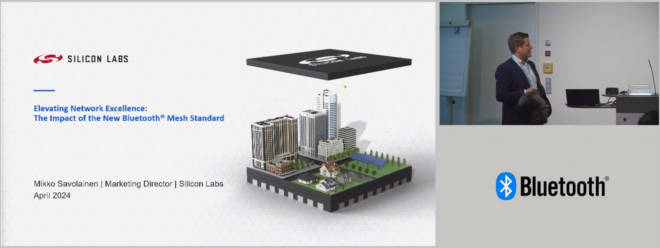
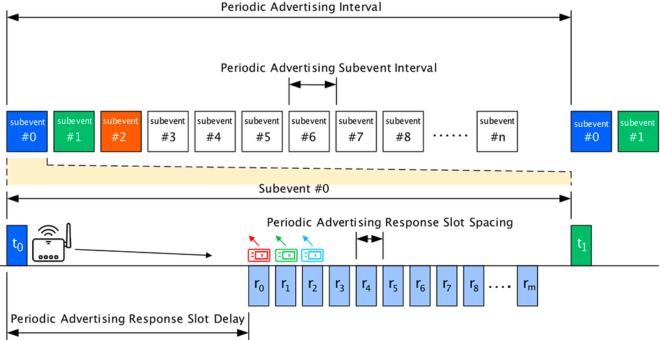

![shutterstock 1653733096[1]](https://www.bluetooth.com/wp-content/uploads/2024/03/shutterstock_16537330961-660x372.jpg)
![Periodic Advertising with Responses[1]](https://www.bluetooth.com/wp-content/uploads/2024/02/Periodic-Advertising-with-Responses1-660x345.png)




